What Are Skills Audit Tools and Why Every Team Needs Them
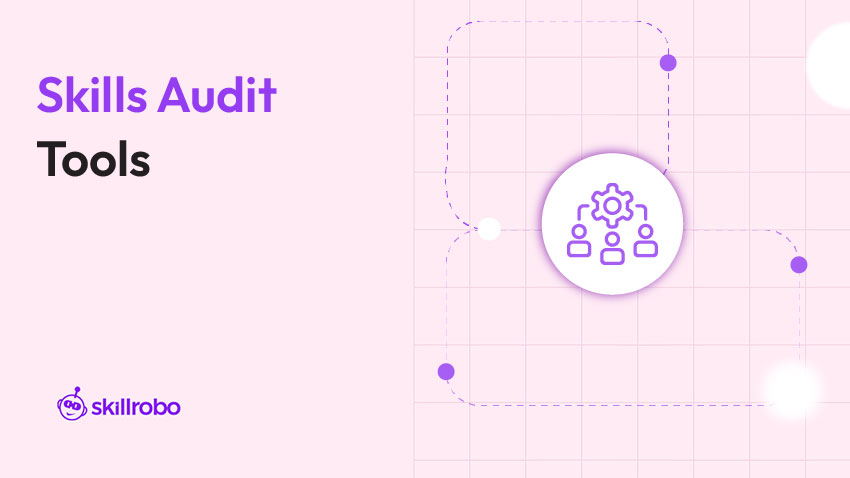
Key Takeaways
- Skills audit tools help organizations identify current workforce capabilities and highlight critical skill gaps for smarter planning.
- A structured skills audit improves internal mobility, learning strategy, and hiring accuracy across departments.
- Choosing the right skills audit software ensures consistent assessments, real-time dashboards, and scalable reporting.
- Knowing how to conduct a skills audit enables HR teams to make proactive, data-driven talent decisions.
- The advantages of a skills audit include better succession planning, faster onboarding, and more targeted employee development.
Let’s Talk About Skills: Why They’re Hard to Track
You know your team is talented. But do you know how talented? Do you have a clear, up-to-date snapshot of who can do what, and where the gaps are? That’s where skills audit tools come in.
Whether you’re scaling fast, undergoing digital transformation, or simply trying to make smarter training decisions, a solid skills audit gives you clarity. It’s like an X-ray for your workforce: you can see strengths, blind spots, and everything in between.
In fact, many organizations are now using online employee skill assessment tools to automate evaluations and map workforce capabilities with accuracy and speed.
In this blog, we’re breaking down what a skills audit is, how it works, which tools can help, and why it might just be your HR team’s secret weapon.
So, What are Skills Audits?
A skills audit is a structured process for identifying, assessing, and documenting employees’ current skills compared to the skills they should have to meet organizational goals.
Think of it as a match-up between your people’s capabilities and your business’s needs. Whether you’re looking to promote from within, plan a training strategy, or restructure your team, this data helps you make decisions based on facts, not guesswork.
And when done using digital skills assessment tools or skills audit software, the process becomes faster, more scalable, and (best of all) more accurate.
Why Are Skills Audits Suddenly a Big Deal?
Here’s the truth: job roles are evolving faster than traditional job descriptions can keep up. New tools, shifting expectations, and emerging technologies are constantly reshaping the way we work. If you’re not auditing skills regularly, you’re likely missing out on hidden capabilities, or worse, overlooking critical gaps that could hinder performance or stall growth.
The advantages of a skills audit go far beyond traditional HR reporting. When used strategically, a skills audit becomes a roadmap for organizational development:
- Supports internal mobility and succession planning by identifying employees ready for advancement
- Sharpens learning and development initiatives through targeted, data-informed training programs
- Strengthens workforce planning by highlighting skills readiness during periods of change or expansion
- Reveals opportunities for outsourcing or smart hiring when internal expertise isn’t readily available
When paired with tools like customized employee skill assessment strategies, skills audits provide both the insight and the structure needed to align your workforce with your long-term business goals.
Bottom line? It empowers HR and managers to build smarter, more agile, and future-ready teams.
Auditing Skills: Where Most Teams Struggle
Let’s be honest, auditing skills manually are not only tedious, it’s also risky. HR leaders are often stuck juggling spreadsheets, inconsistent manager feedback, outdated org charts, and employee self-assessments that may not tell the full story. The result? A fragmented process filled with blind spots and subjectivity.
Without a reliable skills audit tool, the process quickly becomes disjointed and overly time-consuming. Worse yet, the insights gathered may lack the depth and consistency needed to guide strategic decisions about hiring, development, or internal mobility. In fast-paced environments, this inefficiency can directly impact performance and employee growth.
That’s why forward-thinking companies are turning to automated skills audit tools that do the heavy lifting. These platforms integrate AI, role-based templates, and visual dashboards to centralize evaluations and improve decision-making. Tools like cloud-based online talent assessments make it easy to assess skills across distributed teams, while peer-based assessment features add a layer of objectivity and depth by collecting well-rounded feedback from colleagues.
With the right toolset in place, skills audits become less of a paperwork chore and more of a strategic capability.
What to Look for in Skills Audit Tools
The best skills audit tools don’t just collect data, they translate it into actionable insight. If you’re investing in a platform to assess workforce capability, you need more than a checklist. You need a system that brings structure, transparency, and intelligence to your HR processes. Here’s what a truly effective tool should offer:
1. Role-Based Skill Templates
A great tool provides prebuilt, customizable templates tailored to job functions or departments. These frameworks support role-based assessments, helping you evaluate the right competencies for each role without starting from scratch, saving time while ensuring alignment with real business needs.
2. Self and Manager Assessments
The most accurate audits come from a blend of perspectives. Tools that include both self-assessment and manager feedback give you a fuller picture of performance versus perception. This dual-view approach helps detect over- or under-confidence and surface development opportunities.
3. Dashboards and Reporting
Raw data isn’t helpful unless you can understand it. Look for platforms that offer visual dashboards showing skill gaps, team strengths, progress over time, and training needs. Clear reporting enables stakeholders to make fast, confident decisions—and justify L&D investments.
4. Integration with HRIS/LMS
Your skills audit software should talk to the systems you already use. Whether it’s your HRIS or learning management system, integration allows you to automatically update employee records, trigger personalized learning paths, and track progress, all in one place.
5. AI-Driven Recommendations
Smart platforms use AI to go beyond data collection. They analyze patterns and suggest targeted learning plans, hiring priorities, or succession paths based on real-time results. This kind of automation ensures your HR decisions are timely and future-focused.
Decisions are timely and future-focused. If your current tool doesn’t do these things, or feels more like a spreadsheet in disguise, it might be time to upgrade. The right platform not only simplifies the audit process but also integrates skill assessment capabilities that empower your team to act on insights, not assumptions.
How to Conduct a Skills Audit (Without Overcomplicating It)
A skills audit doesn’t need to be a massive, resource-heavy project to be effective. Keeping it simple can often make the process more actionable. The goal is to gather just enough insight to inform smarter workforce decisions, without getting buried in unnecessary data.
Here’s a straightforward, five-step approach to get it right:
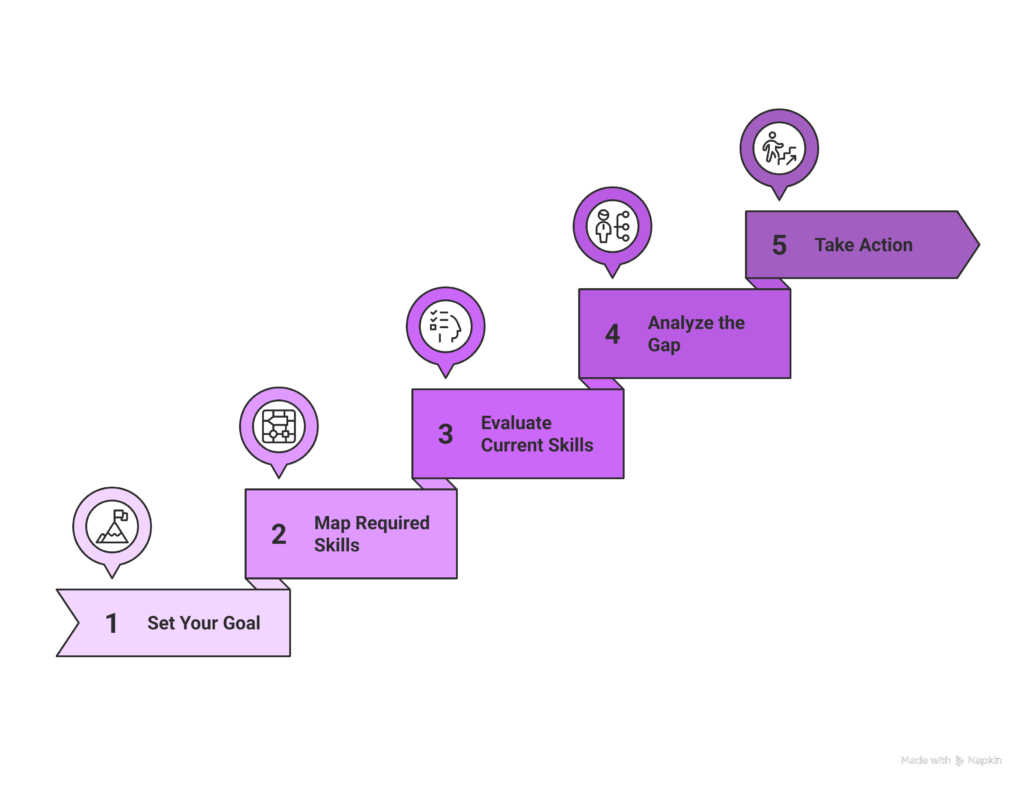
Set Your Goal: Start with intent. Are you preparing for organizational growth, launching a new product, addressing performance gaps, or planning succession? Defining the purpose of the audit helps you focus efforts where they’ll have the most strategic impact.
Map Required Skills: Identify the core competencies each role requires, not just for today, but with future demands in mind. Use input from team leads, industry benchmarks, and job frameworks to create a clear baseline. This step can also be supported by platforms that offer role-based assessments for cross-functional skills, which help break down skill needs across departments.
Evaluate Current Skills: Gather data through a mix of self-assessments, manager feedback, peer reviews, and performance evaluations. You can also use skills assessments or simulations to validate capabilities objectively. Make sure you’re capturing both hard and soft skills relevant to each role.
Analyze the Gap: Once you have both sides of the picture, required vs. existing, you can identify gaps. Look for patterns: Are multiple teams missing the same skills? Are certain roles under-supported in key areas? Use visual tools and dashboards to make the findings easier to interpret and share.
Take Action: Finally, use your findings to inform training, hiring, or restructuring decisions. Prioritize the most critical gaps, those that directly impact business outcomes, and align your strategies accordingly. Whether you’re launching a learning program or hiring for niche expertise, the skills audit becomes your blueprint.
Remember: this isn’t about creating a perfect spreadsheet. It’s about enabling better, faster, and more confident decisions that move your team forward.
1. Skillrobo
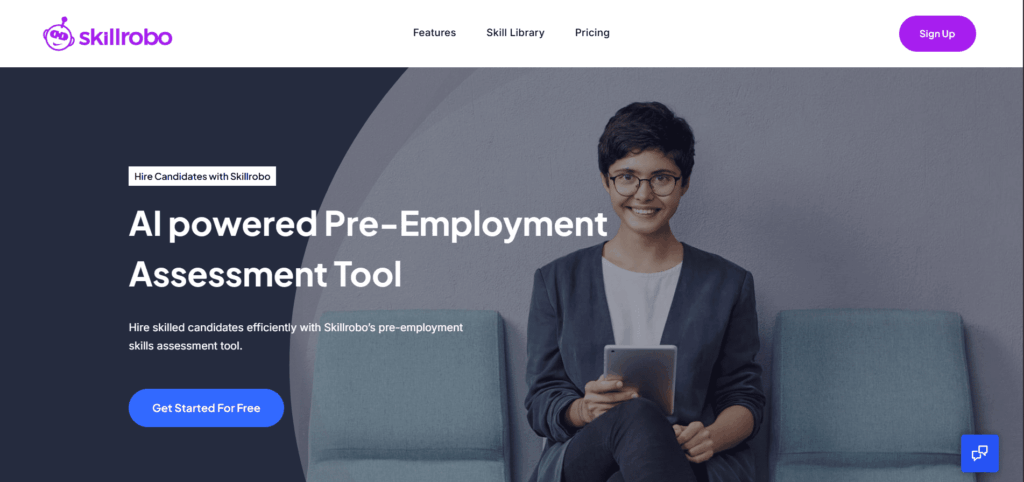
Skillrobo is an AI-powered platform designed to streamline skills audit and skill assessment processes from end to end. With customizable templates, automated scoring, and real-time dashboards, it empowers HR teams to evaluate competencies across technical, soft, and behavioral domains.
Key Features:
- Role-based assessments and skill templates
- Self, manager, and peer reviews
- Real-time skill gap analysis
2. Harver
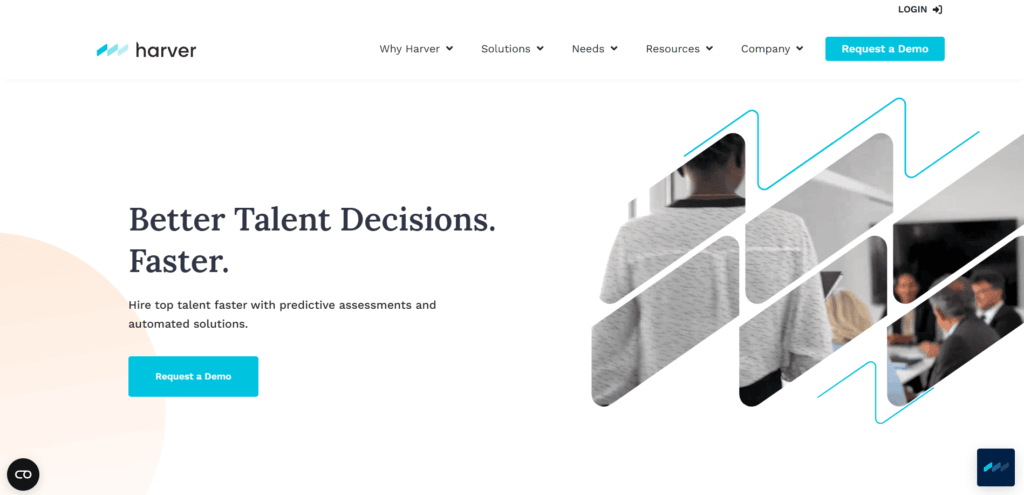
Source: Harver
Harver is a volume hiring and talent insight platform that provides end-to-end solutions for assessing candidate and employee fit through skills-based evaluations. It helps organizations make data-backed decisions by using customized assessments tailored to job roles, improving both hiring and internal mobility.
Key Features:
- Job-specific behavioral and cognitive tests
- Automated matching algorithms
- Centralized candidate analytics
3. Vervoe
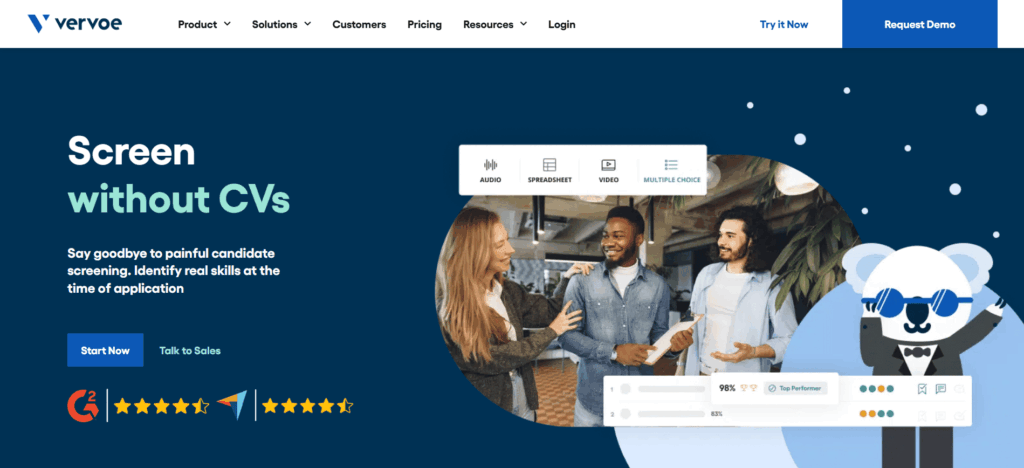
Source: Vervoe
Vervoe is a skill testing platform that enables organizations to assess real-world job readiness through AI-graded assessments. It helps identify top performers by simulating actual job tasks, eliminating bias, and highlighting ability over credentials.
Key Features:
- Auto-scored custom assessments
- Real-world skill simulations
- Role-based test libraries
4. TestGorilla
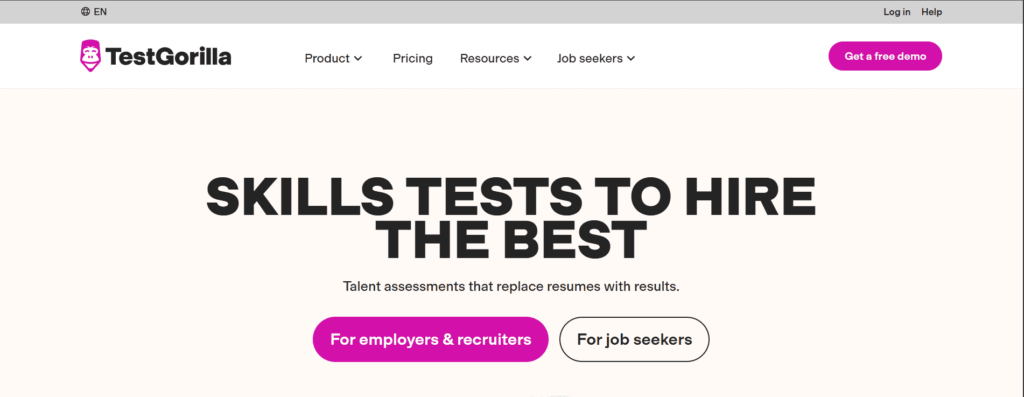
Source: TestGorilla
TestGorilla helps companies make better hiring and upskilling decisions through a library of over 300 pre-employment and competency tests. Its easy-to-use interface and powerful analytics enable efficient candidate screening and skill audits at scale.
Key Features:
- 300+ test templates across functions
- Anti-cheating browser monitoring
- Integrations with ATS platforms
5. iMocha
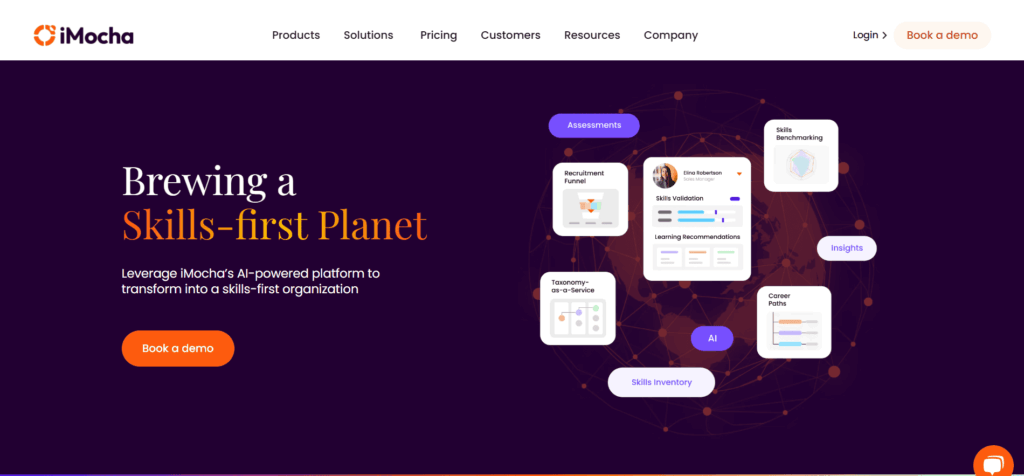
Source: iMocha
iMocha is a digital skills assessment platform built for enterprise hiring and internal workforce audits. It supports over 2,500 skill types and leverages AI to deliver deep insights into talent readiness across technical and soft skill categories.
Key Features:
- AI-driven role-based skill mapping
- Multilingual assessments
- API-ready for system integrations
6. Mettl (by Mercer)
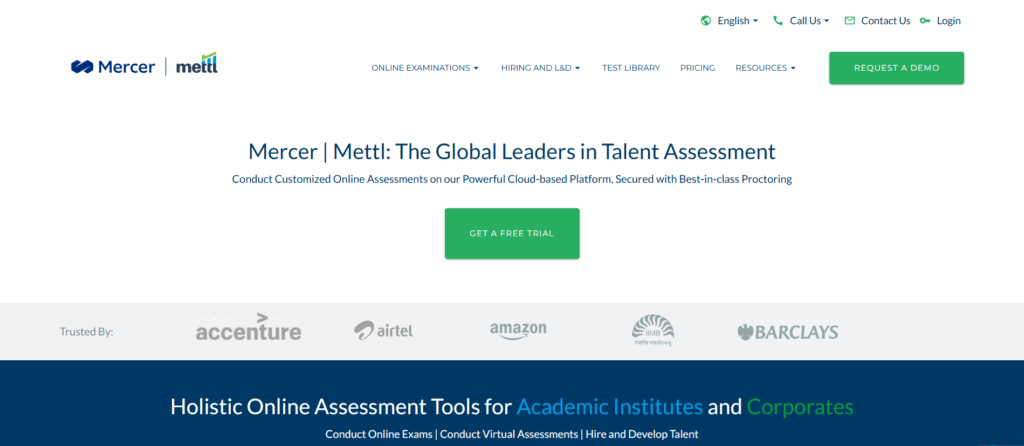
Source: Mettl
Mettl is a comprehensive online assessment tool that helps organizations evaluate job-specific skills and cognitive abilities. With customizable content and secure proctoring, it is ideal for conducting large-scale skills audits and certification programs.
Key Features:
- Prebuilt and customizable skill tests
- Proctoring and anti-cheat features
- Advanced analytics dashboards
7. TalentGuard
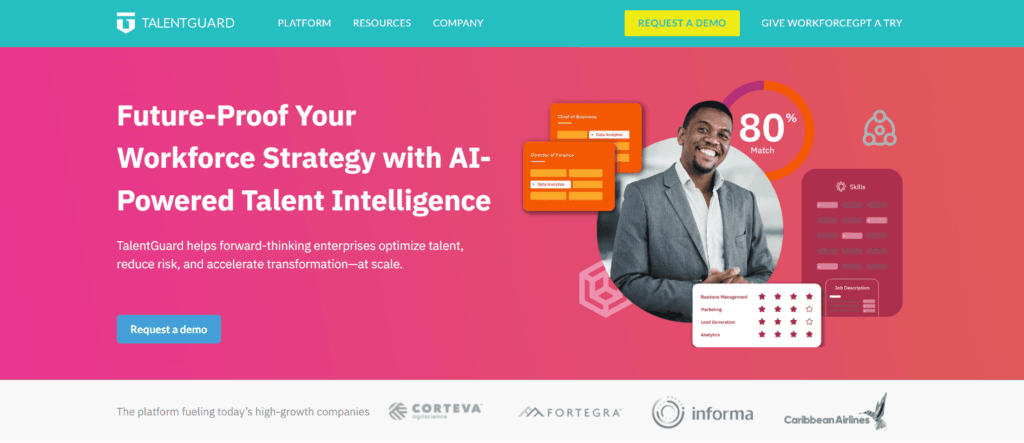
Source: TalentGuard
TalentGuard offers AI-powered talent management tools focused on internal mobility, reskilling, and competency tracking. Its skills audit capabilities allow companies to build dynamic skills inventories and plan workforce development initiatives more effectively.
Key Features:
- Skills inventory management
- Succession and career path planning
Integration with LMS and HRIS
8. Kahoot! 360 Spirit
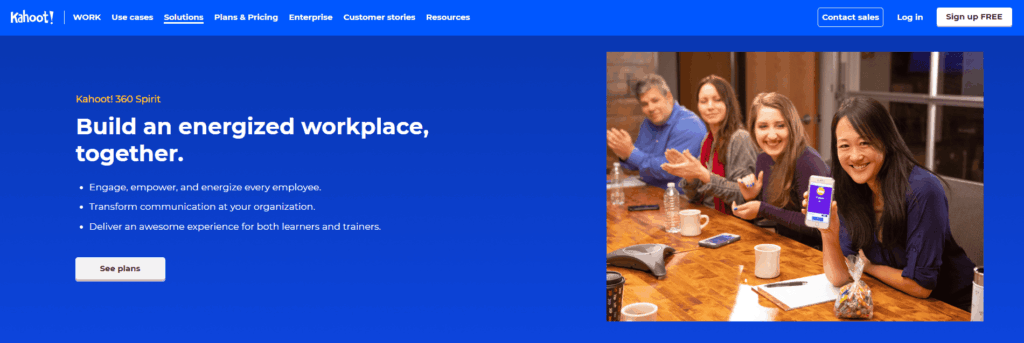
Source: Kahoot! 360 Spirit
Kahoot! 360 Spirit provides organizations with interactive tools for engaging employees in self-assessments and soft skills evaluations. It is designed to boost participation while collecting meaningful insights on team capabilities.
Key Features:
- Interactive surveys and assessments
- Personalized employee insights
- Real-time engagement data
9. Fuel50
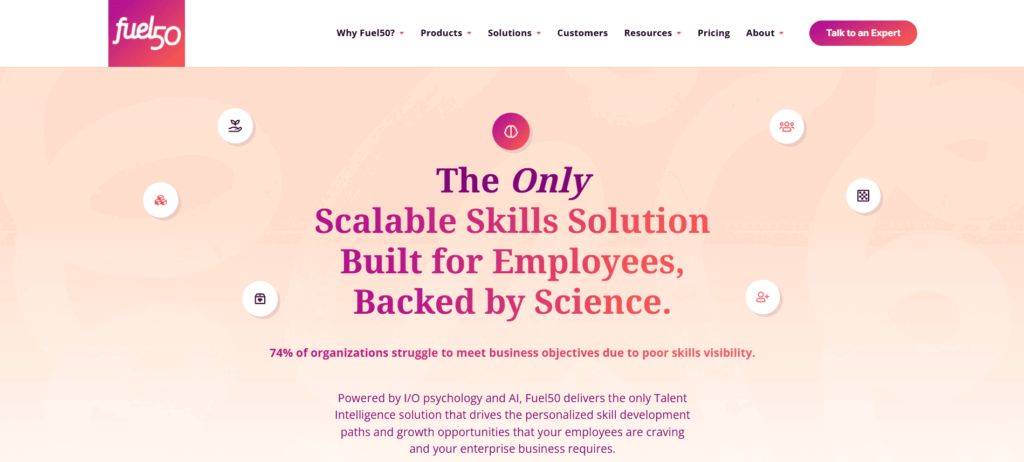
Source: Fuel50
Fuel50 is a talent intelligence and career pathing platform that aligns employee aspirations with business needs. It enables companies to audit current skills and forecast future gaps using dynamic skills frameworks and AI-driven insights.
Key Features:
- Talent marketplace and mobility tools
- Skills gap tracking
- Career path simulations
10. Degreed
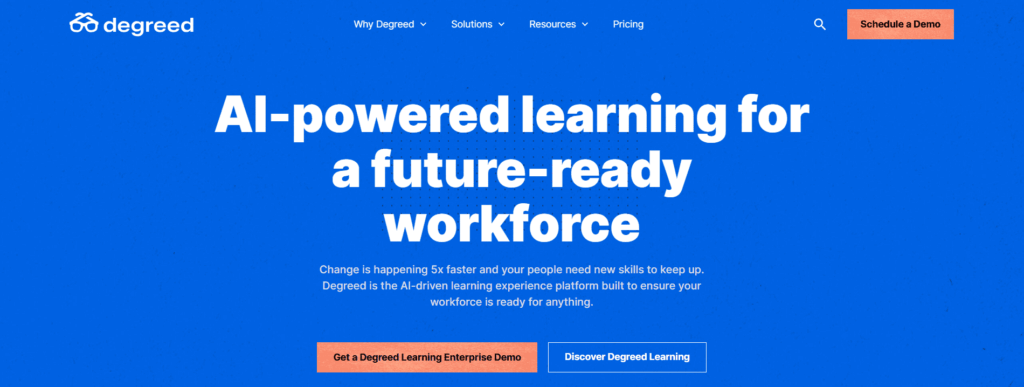
Source: Degreed
Degreed is a learning experience platform that also supports enterprise-level skills tracking. It helps organizations conduct continuous skills audits by aligning real-time performance data with curated learning experiences.
Key Features:
- Real-time skill benchmarking
- Personalized learning pathways
- Integration with existing L&D systems
How Skillrobo Simplifies the Skills Audit Process
If you’re ready to move beyond spreadsheets and guesswork, Skillrobo offers a streamlined, data-driven solution for conducting accurate, scalable skills audits. Designed for HR and L&D teams, Skillrobo helps organizations assess employee capabilities, uncover gaps, and align workforce planning with business goals, all through an intuitive, no-code platform.
Here’s how Skillrobo supports smarter auditing:
- Role-Based Assessment Templates: Prebuilt and customizable templates to match job-specific competencies across departments
- Automated Skill Assessments: Objective evaluations for both technical and behavioral skills, delivered at scale
- Multi-Rater Feedback: Combine self-assessments, manager input, and peer reviews to get a 360-degree view of employee skills
- Real-Time Reporting Dashboards: Visualize skill gaps, team strengths, and training priorities instantly
- Integration-Ready: Connect seamlessly with your existing HRIS or LMS to tie skill data into development plans and internal mobility workflows
Whether you’re conducting a company-wide audit or assessing specific teams for succession planning, Skillrobo gives you the tools to make informed decisions faster and with greater accuracy.
Final Thoughts: From Guesswork to Strategy
A good skills audit tool doesn’t just save time, it adds strategy. It turns HR from a reactive function into a proactive one.
Instead of asking, “Who’s available for this role?” you can ask, “Who’s ready, and what will it take to get them there?”
And that shift makes all the difference.
Want to stop guessing and start making data-informed workforce decisions? Your skills audit journey starts now. Sign up for Skillrobo today and turn your next skills audit into a strategic advantage.
Let’s make it count.